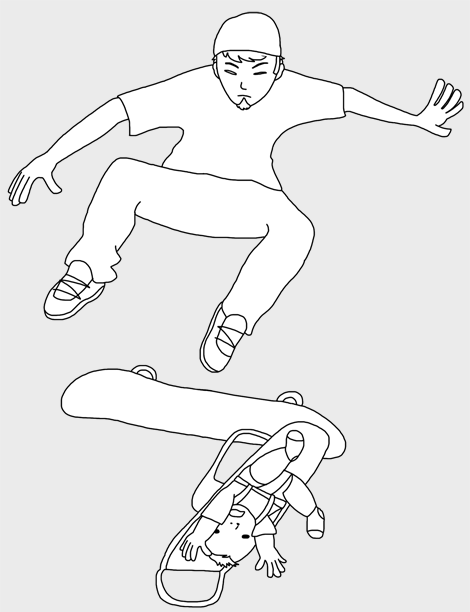slouchyslouch
53 posts
Don't wanna be here? Send us removal request.
Text
Tame Impala’s The Slow Rush and the passing of time

It’s been a long five years since Tame Impala released Currents, the record that pushed the band to mainstream stardom. It’s amazing to see Kevin Parker’s evolution from 60’s guitar psychedelia prodigy to pop-song writing wonder with a reputation to his name. On The Slow Rush, everything circles around the concept of time. Now into his 30’s, Parker attempts to embrace his own ego as a Coachella-headlining act. Taken as a whole, the album sounds like playing Mario Kart on the Rainbow Road map. There is still the Tame Impala sound that is psychedelic and effects-heavy in nature, but this particular record has the feeling of driving through an intergalactic world with a deliberate caution of not leaping into the void. It’s as if Parker is on cruise-control, only wanting to take risks once he’s sure of a straight path ahead. That’s not to say that this record isn’t good. It’s still going to be one of the most polished records this year — enough for anyone to watch their reflection on it with its tighter-than-ever instrumentals and flawless production.
Although his past three albums were much more interesting sonically, his aptitude for perfection at album number four might just be why it doesn’t stand out as much as any of the past records. Mastering all the techniques of recording and production must have put a damper on a lot of the interesting sounds that Parker pursued in the past. It could be that this album might just be too perfect-sounding. Parker’s songs previous to this record would go one direction and then take you by surprise from one moment to the next — moments that would grab you by the shoulder and divert your attention to his genius. Nevertheless, Tame Impala’s evolution into this new decade has produced a record still worthy of a spin.
With each sound level and each parameter calibrated to perfection, opener “One More Year” contains a sound in what he refers to as his Gregorian Robot Choir — a manipulated to precision sample providing the backbone to a mellowed-out track to ease you in to The Slow Rush sound. From the get go, the Tame Impala vibe already feels different from previous iterations of the band. It’s a little laid-back without the grandeur usually offered on a Tame Impala intro. He sings: “Do you remember we were standing here a year ago? / Our minds were racing and time went slow.” It sets the tone of looking into time as an inescapable concept, yet the weak opener might fail to catch anyone’s attention.
Despite leaving the realm of psychedelic rock, at least there are still the relentless grooves of The Slow Rush. “Is It True” gets into funk territory with some bongos (an instrument more prominently used in a lot of the record), and a thumping bassline reminiscent of “The Less I Know The Better.” Halfway through the track, the song transitions into a spellbinding disco groove. Multiple times throughout the record a lull might transpire, but Parker seems to always nudge you back with an attention-grabbing post-track breakdown.
Meanwhile, “Instant Destiny” feels like it can veer into chillwave textures exuding Caribou and Four Tet-like production. Moreover, the hook of “Breathe Deeper” might be one of the catchiest bars Parker’s ever written. “If you think I couldn’t hold my own, believe me I can,” echoes Parker in a mesmerizing turn of phrase. On the track’s outro, just when you think the song’s over, Parker dives into this nasty synth part as if realizing he’s at an acid techno club. On the album’s Spotify feature, Parker muses that the track was influenced by Mariah Carey, Pharrell, and his first time taking ecstasy, which some of The Slow Rush ultimately feels like — a slow rush, if you will, of serotonin flooding your brain and stimulating your senses. It’s a very sensory experience that triggers slow motion club dancing, with Parker’s vocals passing through you like a mist to cool off the heat emanating from your drug-induced body.
Something to note is the more traditional lyric-centred songwriting compared to previous records. Parker’s gone from Zappa guitar freak-outs to added gloss; grandiose synths provide a particularly uniform environment instead of guitar leads transporting you to a wealth of fantastical worlds. Parker never really focused on his vocals and lyrics as much as the instrumentals but there’s more contemplating here when Parker gets into some balladry on songs like “On Track.” It’s a heartwarming song that slows down the album’s dance-centric vibe. Parker laments, “The world ain’t routin’ for ya, nothin’ to lose it over / We’re just a little older, the rest gets easy.” It’s a reminder for us trying to realize our dreams that we’re going to come out of this in the end, as a synth whirls behind Parker’s modesty.
On “Posthumous Forgiveness,” the track might draw a yawn with its slow tempo in the intro, but on closer inspection, Parker provides more depth to his songwriting, musing about his failed relationship with his father. It’s really only in the second half of the track (as usual) where things get interesting: a warbling synth plays as Parker’s mesmerizing falsetto sings a tuneful hook to his deceased father: “I wanna tell you ‘bout the time / Wanna tell you ‘bout my life / Wanna play you all my songs.” Interestingly, the second half of the song wasn’t even supposed to be part of the track according to Parker, in an interview with Zane Lowe. Parker reveals a moving revelation to let go of his spite towards his father. It’s a tender sentiment that reveals more of vulnerable side to Parker’s lyricism.
It’s funny seeing someone succeed as much as he is, coming from the world of DIY indie rock — writing songs and collaborating with artists with the likes of Travis Scott, Theophillus London, Lady Gaga and getting covered by Rihanna, — and still feel the kind of insecurity and doubt he faces. On “It Might Be Time,” he muses about losing his touch: “It might be time to face it / It ain’t as fun as it used to be.” Parker’s self-awareness only brings up our own share of nostalgia for the past, yet is ultimately a distraction for the present. Its chorus can be reminiscent of Lonerism’s psych rock leanings where the track’s drums are hit at the record’s hardest. Despite his insecurity, I can already suspect that he’s going to be nominated for a few of Grammys, as well as possibly winning Best Alternative Album for this record next year, considering the hype and persona he’s built over the five years since Currents. I can even see Parker fitting in as a Grammy-nominated producer in the future as a result of his budding reputation, to the chagrin of many older Tame Impala (myself included).
Long are the days of the “Half Glass Full of Wine” version of Tame Impala. Some can argue that The Slow Rush sound might have started on “Feels Like We Go Backwards,” but now “Glimmer” might portend dance music conductor on future records. Just look at Thom Yorke’s IDM musical stylings at the age of 40, Kevin Parker DJ sets abound. It’s only inevitable for any musician’s career to evolve her sound and style, but the traces of Parker’s to arrive at The Slow Rush have always been there. He’s made three almost perfect albums, so you can’t really give him any shit for a relatively weaker, but solid record. Currents soundtracked a whole camping trip full of fond memories for me. The Slow Rush might just soundtrack the longest periods of our lives in quarantine — a chance for us to dwell on the nature of time and pause for a brief moment.
2 notes
·
View notes
Text
10 Years Later: Women’s Public Strain

10 Years after its release, Public Strain rests in its grave, ready to be visited every so often, to give its respects and admire its legacy. Women’s disbandment was quite the disappointment to fans with only two records released to their name, but was ultimately inevitable. After the death of guitarist Christopher Reimer, bassist Matt Flegal and drummer Mike Wallace went on to form Viet Cong (now, Preoccupations), a band that carried a more aggressive form of post-punk than Women, but then eventually veered into more synthy new wave. Frontperson Pat Flegal went on to become the artist known as Cindy Lee, Pat’s metamorphosis of his new identity, creating melancholic pop music under a veneer of murk. Today, Public Strain plays like an elegy to the band’s past as well as to one of its creators, but more importantly, stands out as one of punk’s masterpieces from the last decade.
On their debut Women, the foundation was laid out with a thin skeleton of lofi indie rock full of hooks laid bare. Tracks like “Shaking Hand” presented glorious guitar acrobatics designed to misdirect while still having fun with garage pop in “Black Rice” or “Cameras.” On Public Strain, the band seems to explore more inward, as its darker, chillier air carries drifts of snow from their hometown of Calgary, Alberta. Although many might still consider the record lofi, its production has somehow evolved into something more deceptively developed, yet all the more dissonant. Chords are more jagged and jarring than ever as if attempting to push listeners as far back as they could. On “Drag Open,” guitars awkwardly squeal, slowly morphing into a riff only a little slightly more palatable on its chorus, the track’s bassline only acting as a guide. Eventually, everything crumbles and come to what Women do best — extended art rock jams that sink into the depths of their unconscious.
As a precursor to what was going on before the album’s release in 2010, post-punk in the 2000s lacked the unpredictability that Public Strain offered. Most of the genre’s sound at that time might have been under the influence of The Strokes or Interpol’s New York garage rock, a totally different sound compared to the more experimental blend of fringe genres found in the 2010s.
Maybe it’s the odd time signatures, the excessive hiss, or random bouts of noise, but what makes Public Strain stands out from the genre a decade later is the intimacy felt throughout its eleven tracks. Sure, post-punk’s purpose might be to eliminate any sense of comfort — to destroy one’s perception of what punk and other forms of conventional music should sound like — but in the world of Public Strain, its cavernous sound invites you to be apart of its delusions despite its claustrophobia. On the krautrock track “China Steps,” dual guitars between Reimer and Pat exchange cacophonous riffs as Matt’s bass keeps a steady rhythm to transport us into the glowing hum of the track’s conclusion — drone to calm the senses. “Narrow with the Hall” reminds me of the Velvet Underground’s straightforward yet beguiling arrangements. It starts off with a simple chords played on each quarter note, a steady Motown bassline, and a Moe Tucker-esque thump of the snare. A storm suddenly shrouds the track in a cascade of noise culminating into something so beautifully crafted. It’s astonishing to witness as everything falls back into place as Pat coos his way back into the calm. These are just a few examples of how refined they are in achieving the balance between noise and melody.
A common comparison and likely big influence in their sound comes from This Heat’s Deceit, a post-punk collage of eccentric sounds where random blasts of flute, horn, and guitar freak-outs filter in and out of the album. Deceit stood out on its own within the confines of post-punk in the 80’s — even knowing how weird post-punk could get — as Public Strain has of its own time in the 2010’s. According to Pat, the album took about 10 months to record where they would track for only 2 days at a time, then not talk to each other for a week. This might explain the shifts in various sounds and moods, yet the album feels like a singular record as any, thanks in part to the production of Chad VanGaalen, and Women’s experience and cohesion as a band.
A lot of the unusual chords and arrangements might come from a lot of exposure to weird jazz music from the Flegel brothers’s father, as well as from the hardcore and metal they listened to in their teens. At the time of recording — and even at present as Cindy Lee — more traditional 60’s pop and R&B might have influenced Pat’s affinity for tenderness such as from tracks like “Venice Lockjaw” and “Penal Colony.” Recorded with minimal drums and the intimate voice of the Flegel brothers, these track feels like respites in between the din of their instruments — lullabies that rock you to sleep, with guitars gently twinkling behind Pat’s feeble vocals. “Eyesore” ultimately stands out as the best track, and an outstanding way to end the record. It’s the exchange of glittery arpeggios between Reimer and Pat, the motown-esque melody, the clouded clarity of the production, and the child-like wonder in its lyrics: “We were sneaking in to the aquarium / Gold leaf in your feet, you left a trail.” It’s the experimentation in different sounds and genres that Women make with your classic four-person guitar band lineup that make their sound so engaging and gripping.
Anxiety and the decay of one’s mental health seems to pervade the record as everything tenses up but then releases as if to relieve the anxiety. The record references Ray Johnson, a collagist and performance artist that committed suicide despite a life full of art and wonder. Today, Reimer’s death seems to permeate the record. “Faces start to blend / Meets a sudden end / And you’re gone completely / I know that it’s hard to go,” sings the Flegel brothers on “Penal Colony,” the aformentioned track evoking a lot of Pat’s Cindy Lee-sound today. It feels heavy just to hear those words come out after Reimer’s passing. The transition into the drone of “Bells” suddenly feels like a funeral song, a moment of silence for the talented Reimer. At a time where the anxiety of death looms over all of us (RIP Kobe Bryant), we mustn’t only remember our past, but cherish the moments we have with our loved ones and be present with them as much as we can. Public Strain as a masterpiece provides us those moments of joy and sorrow, its highs and lows — moments to appreciate, reflect upon, and understand.
#women#public strain#cindy lee#viet cong#preoccupations#album review#music writing#indie rock#art rock#post punk#post-punk
4 notes
·
View notes
Text
My 2010s in Records.
10. My Bloody Valentine — mbv

Wrote about mbv on a separate piece.
9. Earl Sweatshirt — Some Rap Songs
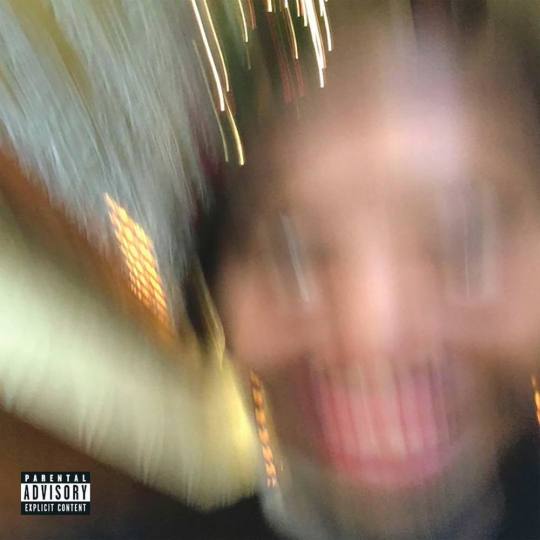
Earl Sweatshirt’s Some Rap Songs is a record of mending and therapy. At the beginning of the decade, rap fans saw the 16 year old prodigy create the most technical and distinctive raps unheard of at that time. Yes, a lot of it was jarring and immature, but the potential was there. While debut mixtape EARL was a teaser and an introduction to his greatness, Doris was his reclamation to the rap game after a period of silence in Samoa. I Don’t Like Shit, I Don’t Go Outside in turn spoke for itself. Its morose disposition then made its way onto Some Rap Songs; not quite his masterpiece, but an accomplished period piece nonetheless. As one of the most highly acclaimed rappers in the world today, Earl spills his guts out on this diaristic tape about his relationship with his father and the emotional exhaustion coming from trying to amend it. On “Red Water,” he repeats the same 8 bars on loop as if caught in a recurring dream. “Papa called me chief / gotta keep it brief / locked and loaded I can see you lyin’ through your teeth” he raps in a fugue state, as if coming to the realization that his father was only there for those momentary times of convenience. It’s always difficult to write something that includes family and loved ones. There’s a sense of vulnerability you have to divulge in as well as a catharsis that fulfills one’s desire to let go of one’s agony. The beats on Some Rap Songs run on loose kaleidoscopic loops, production that Earl has mastered rapping over as his idiosyncrasies in his bars do best when complementing them. Thanks to the influence of his buddies Mike and Medhane, he’s learned to channel his eccentric flows onto those beats. “Riot” closes the record with the sentimental instrumental sampling jazz legend, and uncle, Hugh Masekela. It’s feels like a proper ending to Earl’s chronicle, but the events that have transpired will always be apart of his life. At the end of it all, Some Rap Songs will remain forever a tombstone of his anguish.
8. The Spirit of the Beehive — Hypnic Jerks
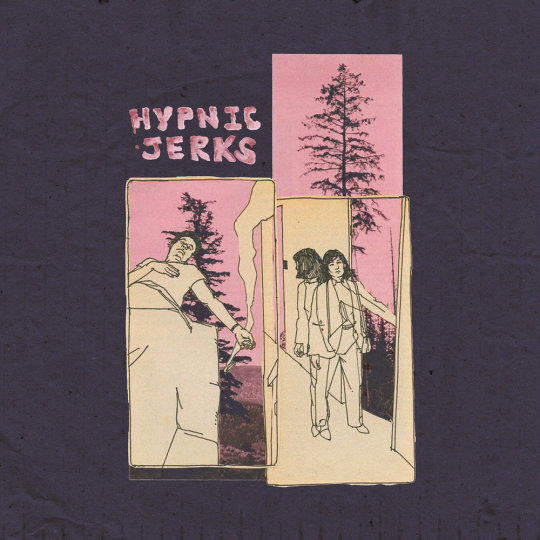
There’s no other dream pop record this decade that could top this almost-perfect album. The hushed vocalizations of Zach Schwartz and Rivka Ravede offer a quiet intimacy in the dreamscape that is Hypnic Jerks. The title in itself lends to the idea of being half asleep and half awake — to be in an altered state where the real and surreal are just two sides of the same coin. Tracks like “poly swim” and “it’s gonna find you” entrance you into that state of unconscious, while tracks like “can i receive the contact?” and “hypnic jerks” make an effort to wake you up from the sublime. Field recordings filter in and out between tracks, as if you were hallucinating the whole time. It’s when “nail i couldn’t bite” and “(without you) in my pocket” play out that you realize it doesn’t matter what state you lie in. Their lucid pop constructions reward repeated listens to the point of obsession in a somnambulant state. The record’s lack of acclaim only makes it feel like you’re in on a hidden secret. To this day, I am completely spellbound to its sorcery and have yet to unlock its mysteries.
7. Iceage — New Brigade

Back in elementary school, I listened to a lot of pop punk; the kind that was rapturously melodic yet cheesily done and overproduced (Think Blink 182 or All Time Low). Until I listened to New Brigade, I didn’t even realize what true punk music actually sounded like. Iceage was just fucking cool to me. Sure, they had the aesthetic, depicting bloody mosh pits and macabre rune art, but it was truly the music that broke into my spirit, shattering what I thought punk sounded like back in the day. I’d read pieces about their notorious live shows where they would play rapid 15-minute sets in the sunless recesses of Denmark, which only added to the band’s mystique. Upon listening to their debut, I felt musically fulfilled like never before. No more of the whiny, drawn out vocals from pop punk bands. Frontman Elias Bender Rønnenfelt had the kind of angsty drawl similar to Nick Cave’s when he played with The Birthday Party which offered a kind of obscene yet confident instability to his performance. Johan Surrballe Wieth and Jakob Tvilling Pless’s guitars have just the right amount of filth in them — an abrasive attack on your soul while Dan Kjær Nielsen’s drums are played propulsively in classic hardcore fashion — never meant decelerate. The record didn’t offer the tightest instrumental, but that was the point. Iceage have gone on to release tighter and more spectacular punk records consistently over the decade but their debut broke the ceiling of what to me punk could, and should, sound like. From the cathartic breakdown of “White Rune” to the triumphant “You’re Blessed,” New Brigade was the record that gave me that spark, the one that carried me to rotting heights.
6. Frank Ocean — Channel Orange

Channel Orange will always be a classic to my generation. From Grammy-nominated “Thinking’ Bout You” to the sweet and charming “Forrest Gump,” we surf through Frank’s psyche in smooth and effortless RnB. Frank Ocean’s vivid universe is one of vibrant summers and distant getaways. Its colourful motifs paint a pretty picture for us — pink skies, monks in moshpits, peaches and mangos, roofs of mansions, palm trees and pools, Majin Buu. Most people I know around my age know the lyrics to most of its tracks. They’re as infectious as any classic from the past decade. I still remember listening to “Sweet Life” by the beach with a friend before attending his concert on his first tour. Everything felt right in the world when he sang “so why see the world when you got the beach” as the waves crashed over the sand and the summer heat glistened over the ocean. During its release, he opened up to the world to reveal his love for another man in an affectionate Tumblr post. It gave us an appreciation into an artist’s vulnerable identity while breaking the door open for other artists to come out in their own way. Frank later released his masterpiece in Blonde/Endless and a plethora of brilliant singles from his radio show, but the stories and music from Channel Orange will remain forever timeless.
5. Solange — A Seat at the Table

“Fall in your ways / so you can crumble / fall in your ways / so you can wake up and rise” sings Solange, on the introduction to her restorative album A Seat at the Table. They’re words I try to tell myself in times of darkness. Solange just has that ability to let anybody express themselves through her music, to meditate on life’s injustices and pitfalls. It’s okay to be mad; it’s okay to rest and take care of yourself as much as you need to. We just have to rely on each other to get back into the fight. It feels like a lot of my favourite records from the past decade are imbued with themes of darkness and isolation. Fortunately, I still have Solange to let myself vent out those frustrations. Whether it’s the strings on the beginning of “Cranes in the Sky” that remind me to slow down or the horns projected behind Master P’s stoic orations that fuel my determination to keep afloat, A Seat at the Table plays like an instruction manual for self-care, black empowerment, and righteous activism. It’s consoling to know that I’m not alone in distracting myself from everything that’s wrong with the world today. 2016 was such an appropriate time for this record to be released. Solange gave us hope, grace, stoicism, and the ability to heal and recharge. A Seat at the Table may be a personal record to Solange, but as she sings on “F.U.B.U.,” this shit is for us.
4. Chance the Rapper — Acid Rap
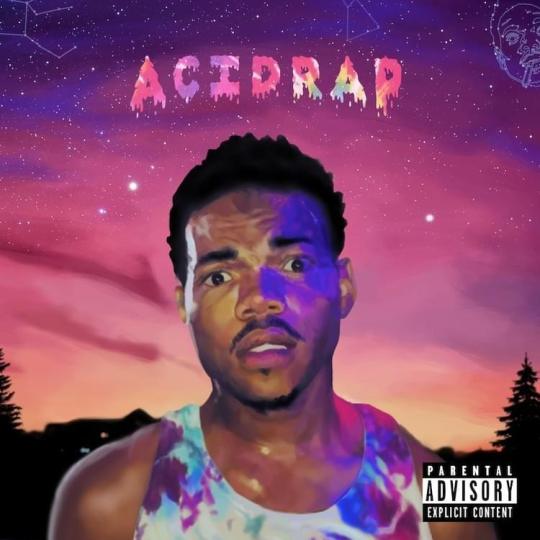
It’s odd to say that my favourite rap record of the decade comes in the form of pop rap album Acid Rap. In making this list, I thought about the obvious greats in My Beautiful Dark Twisted Fantasy or Good Kid, M.A.A.D. City. In the end, Chance’s second mixtape brought me more joy than any of those records did. It gave me the cringiest but most pleasurable musical moments with the homies singing along to tracks like “Cocoa Butter Kisses” and “Pusha Man.” Releasing it independently and as a free download, Chance’s spoken-word idiosyncrasies reveal themselves as classic pop rap gems by the end of the decade. Chance’s whole thing was just about pure positivity and having fun. The era of albums I could compare to it was during the release of Kanye’s College Dropout and Late Registration, a time when Kanye (sort of) envisioned the anti-stereotype in rappers, countering the machismo and toxic masculinity found in a lot of hip-hop now and back then (RIP old Kanye). Chance didn’t care about getting bitches or getting money. He just wanted to do drugs with his friends — to trip out on acid and go on a spiritual journey with all of us. Hidden beneath the positivity, Chance still creeps in a dash of realism and humanity on tracks like “Paranoia,” illustrating the life of gang-banging in his hometown of Chicago. It’s the earnestness in his raps that always pulls me back, the flourishes of piano when he raps “I lean back then spark my shit / I turn up I talk my shit / hope you love all my shit / I hope you love all my shit / IGH.” It turns out, as he declares on the outro, Everything’s Good.
3. Alex G — DSU

On DSU, time stops. The cult of Alex G is now cemented in indie rock lore at the end of the decade with eight albums full of hooks, dreams, and shattered spirits. DSU was the first record I listened to by Alex G, and remains my favourite by his despite him going on to release better conceptual records in Rocket and House of Sugar. No track can be skipped or listened to passively. With most of them springing under the 2–3 minute mark, ideas flow in and out without direction but coalesce into an impressionistic and breathtaking work of art. Hints of Elliott Smith and Isaac Brock echo in the duality of harsh guitar distortion and melodious pop hooks. Guitar feedback never felt so comforting as it colours the magnificence of Alex G’s composition. There’s a kind of deep melancholy in each track despite the ambiguous surrealism lyrics, a perfect winter record to listen to alone in your room or walk through the piles of snow in the night. Its murky yet lush production somehow reaches out to you, helps you drown in its depths and remain there for its 37 minutes. Whether it’s “Skipper” fully attuning you to its hushed presence, or the entrancing opener of “After Ur Gone,” I just feel like I want to close my eyes and immerse myself in there for as long as it allows me to.
2. Frank Ocean — Blonde
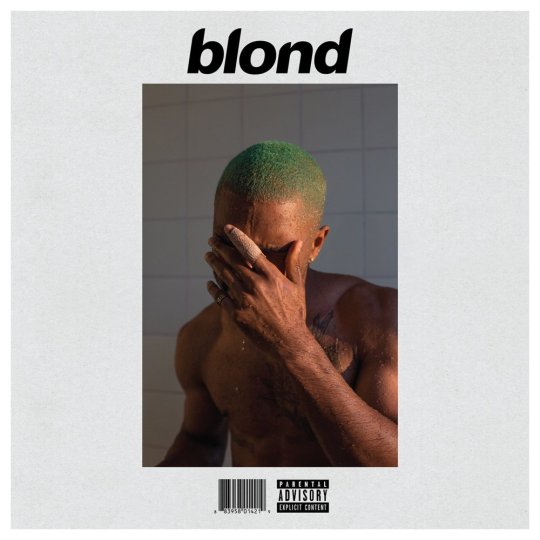
Frank Ocean’s Blonde arrived as a gift from the heavens. For five years, my friends and I have joked and memed about when the new Frank was coming out — whether it was even ever going to come out. Years after its release, it has evolved into the masterpiece that I’ve always wanted him to create. When Endless came out, I felt somewhat disappointed at the material — although later served as the perfect complement to Blonde — because of its lack of sensual pieces similar to those on Channel Orange’s effortless RnB and the latter record’s penchant for easy sing-alongs. Blonde in turn revealed a similar mood: the spacious vapour that fogged up behind Ocean’s intimate croon, the volatility in his voice that permeated your soul — it felt like an emotional load that was difficult to bare, yet something necessary that had to be experienced. I was just getting into my first intimate relationship when Blonde came out, and it’s made me realize how much I wanted to make that person happy, and that I couldn’t take any relationship I had for granted. I felt heavy after listening to this record. The sadboi hours memes ring true to its emotional weight. I would flutter to the arpeggios of “Ivy” as Frank sings “I thought that I was dreamin’ when you said you love me,” bop to the duality of “Nights,” and shed a tear to the wistfulness of “Godspeed.” I wonder how much shit Frank had to go through to even get any of these songs on tape. It’s okay. I like to think think that by the end of it all, Blonde was the catharsis he needed to spill his heart out.
1. Tame Impala — Lonerism

At the end of the decade, seeing Kevin Parker as one of the most highly-touted producers and songwriters in pop music would be an observation if you had asked me a decade ago, when Tame Impala’s first record Innerspeaker — an expansive work of art that recalled 60’s guitar psychedelia — first came out. On Lonerism, Parker’s music evolved into something even more seismic and innovative in scope. As the name suggests, Lonerism is a product of disaffection, self-defeat, and isolation. I’d imagine it was as fulfilling to other music fans of a type to detach from the world and just get lost in another’s. There’s a part on “Keep on Lying” where an endless guitar solo is played in the midst of a dinner party being played out; that feeling of getting dragged to a party when you were just a kid but just wanted to pop your headphones on and refuse to interact with anybody. According to Parker, he put in the sample to make the listener feel even more alienated. It’s a powerful feeling that lets anyone listening to the record in on that vulnerable sensation. In spite of that, tracks like “Apocalypse Dreams” and “Elephant” still give us astonishing psych rock bangers while pop gems “Music to Walk Home By” and “Feels like We Only Go Backwards” demonstrate Parker’s guitar pedal gymnastics over vibrant hooks. Although Currents has skyrocketed him into the fame and acclaim that he undoubtedly deserves, this record will always be his opus in my heart. I’ve daydreamed enough times to the music where its world has settled into my subconscious. It’s a world that comes from genius, but it’s also a world that invites you in to escape from the idea of Lonerism itself, to have something shared with you in solitude.
#top 10 albums#tame impala#frank ocean#alex g#chance the rapper#solange#iceage#the spirit of the beehive#My Bloody Valentine#album review#lists#earl sweatshirt
11 notes
·
View notes
Text
A reflection of My Bloody Valentine’s mbv
I discovered My Bloody Valentine at the tail end of my high school years in 2011 — a kid just getting into the genre of shoegaze and music for the introverted. I dove deep into bands that were completely blissed out on that wall of sound that Kevin Shields created with his guitar technique: amplified guitar feedback that could be sculpted to his liking, and tonally the most arresting chord progressions that allow you to look into your mind and reflect. It had been twenty years since My Bloody Valentine’s last record came out and I was intrigued that they were still engaged in putting out a new record. As an ignorant teenager, I could not conceive of people in bands in their 40’s — let alone their 50’s — making any good and relatable music, or at least music that still made sense to me as a teenager. Two years after constantly listening to Loveless and as soon as I found out that they released the record for free on their website, I was completely floored. I dove right into the beast. The music felt totally aligned with how I perceived the world — a dreary and almost apocalyptic state of hedonistic decay. It was my perception of the world anyway. I felt jaded with what I wanted to do in school and consumed as much as music as I could. That year was a time of brooding for me so consuming as much music as I could gave me a distraction from my depressed state. mbv provided me that cave that I could hibernate in for the rest of that winter.
mbv is a three-part feast; a story to to tell in three parts despite Shields admitting that earlier on during the recording process that he was “purposefully not trying to write songs with a beginning, middle and end.” The record just happened to be written and recorded multiple times during its 15 year construction. On first listen, mbv’s first three tracks reveal a kind of vitality to them. There’s a grandiosity in them that’s found on old tracks like “Come In Alone” and “I Only Said” where I feel a constant shiver on every bent guitar chord. Those opening chords on “She Found Now” immediately makes me melt in my body. It’s one of the more profound introductions on an album I’ve ever heard. The ghostly vocals of Shields evaporate like mist as each strum of his guitar wallow in despair. That shiver reverbeates in my bones as his signature tremolo effect demonstrates his aptitude for texture and atmosphere. On “Only Tomorrow” and “Who Sees You,” amps are turned up to 10 and feature those guitars pushing the limit of distortion that only Shields knows how to manipulate into piercing thunder. It also might be the loudest guitars on a record that can put anyone to sleep because of how serene the atmosphere sounds. Not to mention Bilinda Butcher’s whispered vocals; it’s easy to daydream as you feel the softness of her breath veiled in the mix.
My Bloody Valentine change the mood on the 2nd coda as tracks float lightly just a few inches off the ground. On “Is This and Yes,” hollow organs are played hauntingly while Butcher croons in languor. It’s a respite that calls for tranquility before Colm Ó Cíosóig’s mechanical drum beat kicks in on “If I Am,” a sultry dream pop track designed to make butterflies flutter. It recalls Loveless’s penchant for love songs and candied riffs. Butcher repeats the phrase “be my lover,” as if staring into your soul, eyes fully locked. “New You” then feels disco-influenced, a more slow-burnt dance under the moonlight. This second part of the record encapsulates My Bloody Valentine’s taste in pop music. A lot of their tracks from Loveless and even on their first album Isn’t Anything had those same inclinations yet were always wrapped in cacophony. It feels as if My Bloody Valentine decide to sweeten up their sound with more modern production chops 20 years later, but then veers back into sheer volume in the record’s final act.
The third part of mbv revs the engine back up to prepare for an onslaught to your ears. Its drums trudge in militaristic fashion through its first two tracks and slowly evolve into something out of this world. “In Another Way” is a kind of assessment in engaging in radical cacophony. It returns to those heavily distorted guitars somewhat churning out what’s left of its pop energy. The track then devolves to “Nothing Is” to clear a path for destruction. It feels post-apocalyptic in the way that Mad Max: Fury Road exhibits the fatalistic pursuit of Charlize Theron’s Imperator Furiosa by Immortan Joe and his blood-thirsty War Boys. I can just imagine Shields or bassist Debbie Googe strapped to one of the war vehicles to hype up the hunt. Finally, ender “Wonder 2” fully draws you into its gravity. Drums are fully rendered into artificial Burial-esque jungle. It’s a strange fusion of electronic music, shoegaze and novelty that make this final stretch of mbv to be somewhat of a new direction of their sound.
I often wonder what it would have been like if I was in my teen years or even in my early twenties when Loveless came out. Music fans back then must have had felt lucky to be living in a year that broke through the glass ceiling of rock and hip-hop as albums such as Spiderland, The Low End Theory, Nevermind, and Loveless came out. In some ways mbv turned out to be my Loveless in the sense that its music has been drilled into my consciousness the way Loveless might have been something so captivating to fans back then. In 2018 there was news of two new My Bloody Valentine records coming out in 2019. It’s the last day of 2019 as I write this, and no records have come out to no one’s surprise. It’s okay. If it took them 22 years to release something as beautiful as mbv, and it takes another 22 years, it looks like I’ll have a good year of listening to music in my 40’s.
2 notes
·
View notes
Text
black midi - Schlagenheim
Black Midi are a UK band that came out of nowhere. In a collection of different genres of math rock, post-punk, funk, and noise, Schlagenheim is designed to misdirect but captivate. Songs are constructed from spare parts, built up into a giant dome of magnificence, then blown up to shatters, only to be picked back up and rebuilt again. There is a lot of potential oozing out of these four lads that came out of BRIT school, a performing arts-focused education that has some notable alumni in the likes of Adele, Amy Winehouse, and FKA Twigs. It’s no wonder the band is so talented at creating something novel in a time of oversaturated music.
Black midi’s technical prowess has to be acknowledged with drummer Morgan Simpson leading the charge. From being a drummer prodigy when he was just a kid, Simpson has been actualized in the form of an experimental punk drummer behind the pandemonium that the rest of the band relays. On opener “953,” the energy of black midi is immediately palpable with Simpson fuelling the sound with a blast of odd time signature carnage. The music is robust and frantic, a kind of rush that pulls you in from different directions. Simpson’s playing sounds like drum fills being played as the backbone of the beat instead of breaks in the beat, carrying the track along with Geordie Greep and Matt Kwasniewski-Kelvin’s barrage of guitar distortion and Cameron Picton’s walloping bass.
The band’s range in different genres shows their vast array of influences. “Speedway” and “Reggae” take their influence from Talking Heads and their noise godfather Steve Albini. The songs shift the opening track’s frenzied mood into more freeform jazz-punk and danceable art rock. It’s a peculiar change that makes anyone think that this band is more than just blast beats and raw energy. They do come from a more formal music education after all, but feeling that shift gives these lads more musical clout than your average punk band. Returning to optimal disorder, “Near DT, MI” assaults the ears in fantastical ways. Picton leads the helm this time, referencing what can only be the Flint water crisis as he screams “I’m alive and I can see / The water is foul and it’s hard to breathe.” It feels like a protest song that would make Fugazi proud and leaves one completely breathless after its short two and a half minute span. Then, some western vibes — with Greep and Kwasniewski-Kelvin occasionally sporting a cowboy hat — centrepiece “Western” slows down to feel like waking up in the hot empty desert. It’s the band’s most most beautiful and eloquent track on the record, with alt-country guitars flourishing and developing into a steadier rock ballad with their signature shrouds of noise culminating to signify that they still come from avant-garde territory.
Greep’s unique yelps give truth to the saying that frontmen make bands. In the chaos of the music, it’s difficult to pull your attention away from his spastic vocalizing. Greep is just the cherry on top in the already eccentric instrumentation of the band. On the short snuff film that is “bmbmbm,” Greep snarls like a cartoon villain over a steady thumping beat and a sample that sounds like someone being tortured by Greep’s villainous persona. There is an overwhelming discomfort and tension that feels like something horrible is happening while the steady rhythm of the bass and drums act like a death march for a secret cult, preparing to make a sacrifice.
In the closing of the decade, as hip-hop takes the title of Most Popular Genre, rock music is seeking to take a left turn. As one of 2019’s best records, Schlagenheim breaks new ground, and knowing how old black midi are, it’s safe to say that the future of rock music is in good hands.
5 notes
·
View notes
Text
JPEGMAFIA’s All My Heroes Are Cornballs
A year and a half after releasing Veteran, JPEGMAFIA (known as Barrington Hendricks) arrives with a more psychedelic yet pop-centric take of his own vision of hip-hop. Before this new record’s release, an onslaught of consistent features and ecstatic live youtube videos have come out this past year to make JPEGMAFIA truly one of my favourite artists of the few years. On All My Heroes Are Cornballs, he raps as if he’s going through an obstacle course, maneuvering his way through the schizophrenic beats that he himself has produced. There’s a flow in the record where songs creep into one another seamlessly as if multiple tracks are blobbed into one or splintered into many. Basic song structures are thrown out the window as every musical section blurs the lines between different ideas, and at the end of the race, Peggy can wipe off the blood, sweat, and tears and tell himself that he can’t disappoint anyone any longer.
In past records, JPEGMAFIA has dived into the trenches of the dark web. His bars paint a picture of him digging into the deep vortex of the internet to massacre ideas of white supremacy, sexist incels and people who just need to be called out on twitter. A secret agent of the people, he has now come out of the trenches dressed in silk and satin on the album cover as a prophet of justice. Peggy’s neurotic anger might still be displayed on Cornballs, but a lot of it is scattered with more tempered yet cut-throat bars into a space where he doesn’t need to yell out his wrath all the time. There’ll be a few measures of a melatonin-injected beat where one would just want to just light up and kick it, but Peggy doesn’t allow anyone that peace of mind. In the beginning of “Kenan VS Kel” he exhibits a swift precision and brashness, only for a searing doom metal guitar chord to break the charm. On "Beta Male Strategies,” things take a turn for the worse when a mind-bending guitar solo crunches through bones after a mellowed-out sample. With his arsenal of guitar samples in his toolkit he resembles that of a punk/metal frontman, directing moshpits on his order. When those guitar chord ring out, the left wing hades proceeds to rise from the ashes as he yells out a punctuated “FUCK” on every measure. These plethora of fucks throughout the record kind of play as a motif for the constant frustration Peggy feels in the divided and dark sociopolitical climate of the past few years. There’s more fighting to be done in this world, and Peggy is never tired.
JPEGMAFIA’s production has always been a standout on his records. The chaos that enveloped a lot of the first half of Veteran had a certain eccentricity to them such as on hard hitting tracks “Real Nega” and “Thug Tears.” On All My Heroes, his beats still convey that eccentricity yet veer into more vaporwave territory where his visceral angst cuts through the melancholic bliss of lofi static. Take tracks like “PTSD” and “Post Verified Lifestyle,” where shimmering synths give Peggy a somewhat meditative state only for him to pull out the glock and fire. There’s also a new found confidence in JPEG’s singing on this record where tracks like “Jesus Forgive Me I’m a Thot” carry a playfulness in their hooks. Released as the first single a few months before the release of the record, Peggy creates one of his all time best tracks in my opinion, one where I can say that he’s not just one of the more innovative rappers in the game today, but also one of the more innovative producers in hip-hop. Off-key piano chords flourish at the onset of the track. Suddenly, the earth feels as if it's about to erupt as his case of veteran status isn’t something to be ignored: “Sucka I’m prominent, I was anonymous / I been in front of you every time,” he raps a kind of teaser to what he’s always put forth in his more abrasive tracks like “Baby, I’m Bleeding,” but he then rightfully brings you back into the serenity of those piano flourishes. In this version of JPEGMAFIA, he attempts to preach composure even if that itch for a slaughtering tries to break loose.
Despite Peggy’s penchant for calling people out, there’s still a humility in his nature that makes his music more approachable for newer listeners on this record. In some way, he’s become more of a poptimist where his singing can even render one to smile listening to playful tracks like “Grimy Waifu,” “BBW,” and the title track. On “BBW” he sings “Still can’t believe I’m getting paid for this art today,” a sign of gratefulness for the dedication that he’s put into making music the past decade. On “Feel the Frail” he vents his pressures of being a more recognized artist. He sings "Don’t rely on the strength of my image, hey / If it’s good, then it’s good / Break it down, this shit is outta my hands” to tell himself that whatever acclaim comes his way, he’ll always have his primary hustle. He’s already claimed on his album teaser videos interviewing other musicians (James Blake, Jeff Tweedy, Denzel Curry) that the new record was going to be disappointing to people. It might be a defence mechanism to protect himself from the backlash, but I think that many fans would claim otherwise and appreciate the work and the product. On the Vancouver date of the JPEGMAFIA type tour, I witnessed a good chunk of the turbulent crowd sing along in glee with Peggy where this communal spectacle indicated his penchant for hooks and joy in the music. Nevertheless, he still manages to sneak in his rage on every track, still the primary reason fans were attracted to his music in the first place.
At the end of the verse of “Jesus Forgive Me, I Am A Thot,” JPEGMAFIA pours his heart out as he raps “I put my soul into every bar / Into every verse / Into every rhyme” not at all a plea for attention to his dedication, but a convincingly genuine expression of his art. He might be a rap veteran in all sense of the word, but there’s still so much time for him to put out the best music that he possibly can in the next upcoming decade.
4 notes
·
View notes
Text
Shlohmo’s The End (An Album Contemplation)
Here’s another repost of a piece I wrote on Medium.
It’s been 8 years since Shlohmo’s Bad Vibes came out. It’s powerful ambient energy will always have a place in my heart. The lonely rainy days at home pondering about my life’s future, the nights driving on empty streets thinking about the past, the empty afternoons on my laptop browsing through the endless filter of the internet high out of my mind. These were the times I would listen to Shlohmo’s piercing beats, layered with sounds of typing, a mindless tapping on the desk, or a ruffling of sheets of paper. Everything felt like an ASMR cloud dream.
In Shlohmo’s The End, the mood is much pronounced. Hip-hop and rock’s influence pierce through the mix. Tracks like “The End” contain trap drums and synths that evoke that Southern hip-hop sound, but it’s really the rock influence that stand out on these tracks. Every distorted guitar sound churning out an evocative melody carries the weight of mindless wandering. There’s a darkness that envelops every single one of Shlohmo’s tracks, but it’s a darkness that provides warmth and shelter for the winter to come.
“Rock Music” is a perfect introduction to the end of the world. It acts as the forming of the meteor in space. Dust particles in the black depths of the universe coalesce into a massive rock, heating up to astronomical levels. It’s trajectory — the destruction of an entire planet. No one is aware of the end except this arbitrary rock that will come crashing down to our fatality, a possible justification of our own planetary self-destruction. “The End” is a tribute to that ignorance. It’s trap sounds elicit a nonchalance on the dance floor. Billions of people around the world holding escapist beliefs are about to die. Drugs, music and other vices are consumed. Soon, everything will end. Our escapist tendencies are realized when people are finally put at rest.
The whole record moves at slow motion. There’s no immediate worry until the very end when there’s beauty in the sky, a flaming ball of misdirection. One may think that it’s merely passing by, waving at you, but there’s that lingering feeling of anxiety that things might just end up lost and destroyed. The record ultimately has me thinking of what I’ve done in the past. Have I tried to fulfill my potential? Did I succeed in every aspect of my life?
The film Melancholia offers a similar parallel to the record. The only few people on earth know that everything is about to collapse are frozen. Knowledge is a damning curse. What else can you do if all the glamour in life is in your possession? The only awareness that matters in the world is at the palm of your hands and in your head, yet when the time is up, none of it ultimately matters.
On “Panic Attack,” footwork permeates the track. After the apocalypse, a chase ensues. The line between good and evil has been drawn and a cascade of demented humans chase after the vulnerable. Where can one escape after everything has fallen apart? Are there anymore safe spaces on earth after everything has fallen? One can only reach the sanctuary that is death.
So what can one do when faced with the overwhelming anxiety produced by the articulation of death? It’s an existential question that we dread on a day-to-day basis. There are metaphoric meteors heading towards our own individual destruction in our everyday lives. The luxury of oil, the overindulgence of meat and sugar, idleness, depression, political war, fatigue, poverty, heartburn. These are all signs of a slow death. Shlohmo’s end doesn’t have to mean a meteoric reign over collapsed cities. It is the acknowledgement of these societal factors that we must assess and not just mull over, but must be acted upon. “Staring at a Wall” is a little trickle of every one of these thoughts. They bog us down, but all we can do is stare into nothing, into the abyss of death without consciousness.
On “Be Myself,” glitch and IDM influences shine through the track. The sputtering vocal samples echo on the dance floor. The final seconds of Shlohmo’s songs always end in a dream-like haze. A surreal reality that everything is indeed coming to end at this present moment. The vinyl still spins and the stories we read are no distractions anymore.
The record ends on the ambience of “Still Life,” a vibrant yet calming breeze of nature. God’s storm has ended, and now everything is at peace. Shlohmo’s use of RnB vocals, as used prominently in past efforts, are still at play on this record, mostly as an instrument this time around, and not at the centre piece. Was it all a dream? Was the future just shining through our consciousness? Questions, questions questions. The track brings a pause for reflection and assessment of our time in this life. What do we all have to lose in the end when everyone else loses the same thing? Is humanity really something so sacred that we must do whatever we can to stop it? These might be fatalist arguments founded on nihilistic principles. Do we give up everything, or savour everything while it lasts? So many questions to ask, yet so little time to answer them as we turn our heads the other way for something more pleasurable. At the end of everything, The End allows us to dive deeper into the crevices of the mind. It’s a meditation that we must reach into on a daily basis. Life is about self-awareness. As humans we have the capacity to acknowledge our faults and our own destructive behaviours. It is only through constant self-reflection that we can trudge through the everyday struggle of our being.
0 notes
Text
Taking Back Sunday’s 20th Anniversary Tour
Getting back into the tumblr thing again to find other music writers. Here’s a repost from my Medium account.
The first time I listened to Taking Back Sunday, I was probably around 12 or 13. I was just getting into the so called emo and pop-punk scene. Taking Back Sunday was one of those bands that were easy to get into because there was so much affection in the vocals, you had to yell out the lyrics even when you had headphones on. The show at the Commodore Ballroom in Vancouver exhibited how old music could still bring together a horde of former (and maybe present) scene kids and unite them in glory.
You could feel a certain excitement in everyone at the venue. My friend and I were grabbing beers only a few minutes before the show was supposed to start. As soon as I saw the now elderly members of Taking Back Sunday get on stage and immediately started playing “You Know How I Do,” I had the most intense urge of just getting into middle of the crowd as soon as possible. The cascading guitars of the song pummelled like a vehicle’s engine getting ready for the long trek. Adam Lazarra started to combust on the stage: “So sick so sick of being tired / and oh so tired of being sick,” a line thematic of my generation’s emo kids. Everybody just wanted to be their own person and not have anyone tell them what to do. My friend and I couldn’t stop giggling about how we were going to see them, and here they are on stage as pumped as they looked 20 long years ago.
Slowly, but surely we made our way towards the mosh pit in time for “Cute Without the E,” a classic by the Long Island band. Adam Lazzara at 37 years old still looks great, a kind of scene Jimmy Page as my friend mentioned at the time of the concert. He doesn’t look like a rockstar that’s dwindled to the fringes of the scene but a man still worthy of the stage. I was aways at awe watching him swing that mic on early youtube clips and here he was as nimble as ever tossing the mic around like a whip easily coiled and ready to lash out. John Nolan looks like a dad now with hair flowing down both sides of his face and a semi-kept beard. He still belted out my favourite echoed vocals, always fighting for space in the song but in reality always complementing Lazzara’s wails.
One of the highlights from the concert was the popular “You’re so Last Summer.” Goosebumps crawled all over my body as soon as Lazarra belted that iconic opening line from the track: “She said don’t!” — the crowd relishing in the song’s luster. High school was such a time of isolation and angst for a lot of these late twenties “kids,” but that doesn’t mean we could relive those times with a sort of nostalgic joy. Everyone gathered for this celebration of music can look back into those times of yearning. It’s always nice to look at ourselves now and realize how much we’ve grown and matured.
After they finished playing the album “Tell All Your Friends,” Lazzara had one of the members of the Maine come out to flip a coin whether to play the albums Louder Now or Where You Want To Be. I wanted them to play the former but the latter got picked to the delight of the crowd. It seemed like the younger generation of Taking Back Sunday fans (probably people my age) would have gone for Louder Now because of the song “MakeDamnSure” but I didn’t mind it. It was one of the bigger highlights of the concert by a mile and probably had given me the biggest nostalgia hit. That was one of the first songs I played live with my first band in the Philippines. Those were the makings of musicians following their own path today. At the Commodore Ballroom that night though, bodies flung against one another in the hopes of feeling each other’s sweat and passion, bits of saliva trickling out of everyone’s mouths shouting out the words of a disgruntled poet about a bad relationship: “I just want to break you down so badly,” a line possibly misinterpreted as putting words into action but is actually meant to convey the deeper sadness of having oneself being put down by a loved one. There’s a willingness to hurt the other person but there is a love that holds it back.
Towards the second half of the album, everything slowed down. Most of the crowd stopped moshing and just kept to their miniature head-banging. It was only during the 3rd part of their set where they played “This Photograph is Proof” and “A Decade Under the Influence” where the crowd gained a third jolt of energy to start another mosh and singing along to the teenage anthems of their childhood for the last hurrah. “I’ve got a bad feeling about this,” a catchy lyric repeated through Nolan’s angst on the track has been ringing through my head for a few days now. The lyric captures a moment of lingering anxiety before a predicted breakup. The opposite could be said about the whole night.
At the end of the show, I was left with feeling a sense of elation, a sort of transcendence within the present world. There aren’t a lot of bands that can do that. Maybe it was the nostalgia hitting me hard, or maybe it was just my communion with the audience. There’s a sense of intimate unity you achieve when moshing with other people who know the lyrics. It’s a shared dance we’ve savoured in our teenage years, a time when everything was easier even if at the time, it felt like the whole world was against us.
I found out about Taking Back Sunday through one of my good friends from my childhood. He showed me the song “Timberwolves at New Jersey” during our preteens, a time for some of us when we started to consider rebelling against our parents. That intro guitar riff with Lazzara singing, “Get up, get up, come on, come on let’s go!” always got me out of my seat and made me want to start moshing. I long for the days when I was just getting into that emo scene and wanting to be a punk rocker so bad. Most of the people my age at the show could probably say the same, and for that one night we collectively embraced that culture not with a mutinous furor but with a devotion to the music.
2 notes
·
View notes
Photo

John Cale, Lou Reed, Patti Smith and David Byrne
4K notes
·
View notes
Video
FIDLAR: Cocaine (with Nick Offerman)
Watch this VERY NSFW video from Los Angeles skate punks FIDLAR to find out why Nick Offerman is so pissed.
188 notes
·
View notes
Photo









If Texas Governor Rick Perry thinks he can talk shit about New York and not hear from Lewis Black, he’s got another thing coming.
Visit NYmiddlefingerTX.com to watch the full, uncensored PSA from last night’s Daily Show.
15K notes
·
View notes


